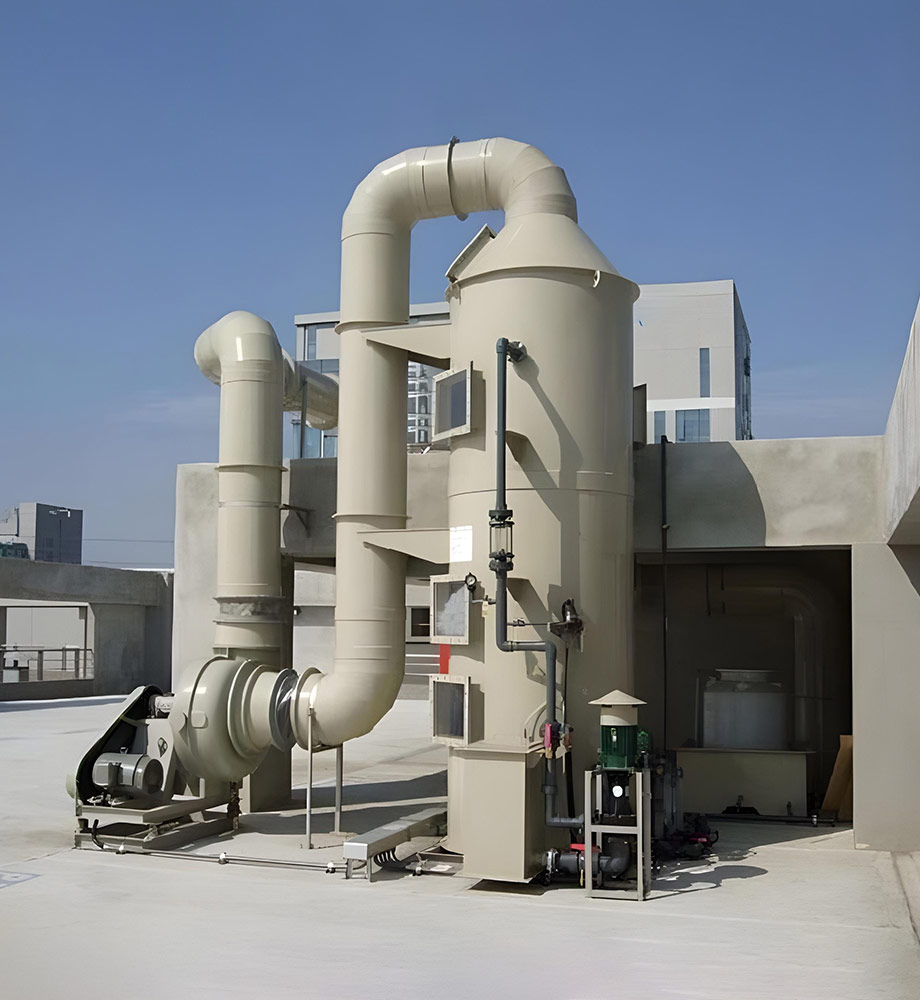Key Features
- Solid-Gas Reaction Bed: Uses fixed or moving packed beds of sorbent to chemically neutralize or adsorb pollutants. This avoids any liquid effluent.
- FRP Housing: Fiberglass-reinforced plastic frame and panels resist chemical attack and prevent leaks of toxic gases or powders.
- Acid/Alkali Resistance: FRP handles spent reagent dust and acid particulates with no corrosion, unlike metal ducts.
- Compact Footprint: Dry scrubbers often occupy less space than equivalent wet systems for the same duty.
- No Wastewater: Since no scrubbing liquid is used, there is minimal secondary treatment needed.
Benefits
- Effective Gas Cleaning: Ideal for removing HCl, SO₂, NH₃ and other acid or basic gases via dry neutralization. Also captures fine dust and particulate matter.
- Low Maintenance: FRP construction means the vessel lasts far longer than a steel housing would when exposed to reagent dust. No pump or drain system simplifies upkeep.
- Cost Savings: No need for water treatment or pumps lowers capital and operating costs. Replaceable media cartridges or bags can be swapped out during routine maintenance.
- Temperature Tolerance: Dry scrubbers handle high-temperature gases better than wet scrubbers, as there’s no risk of evaporative cooling or freezing.
Applications
FRP dry scrubbers are suited for chemical plants, petrochemical units, battery manufacturing, chemical milling operations, and power plants where gaseous pollutants need neutralization without liquid contact. They are used to scrub flue gases from furnaces, manufacturing processes (e.g. pickling, acid etching), and any stack where acid gas or particulate control is needed but liquid discharge must be avoided.
Technical Specifications
Typical design parameters include bed depths and surface areas tailored to the gas flow rate and pollutant concentration. Dust-loading capacities and pressure drop specifications are engineered per site. (For example, FRP scrubbers can integrate filter cartridges in a single FRP housing.) Maximum operating temperatures are often limited by the resin system, e.g. up to 80–90°C for vinyl ester based FRP.
Unique Selling Points
The uniqueness of an FRP dry scrubber lies in combining high chemical durability with a “dry” process. FRP dampers and vents allow these units to safely isolate hazardous streams during shutoff, enhancing operator safety. Compared to metal/dust collector systems, FRP dry scrubbers require far less maintenance and won’t corrode under acid dust. Their modular, lightweight design also makes them quicker to install, and they can be retrofitted into existing ductwork with minimal structural reinforcement.

